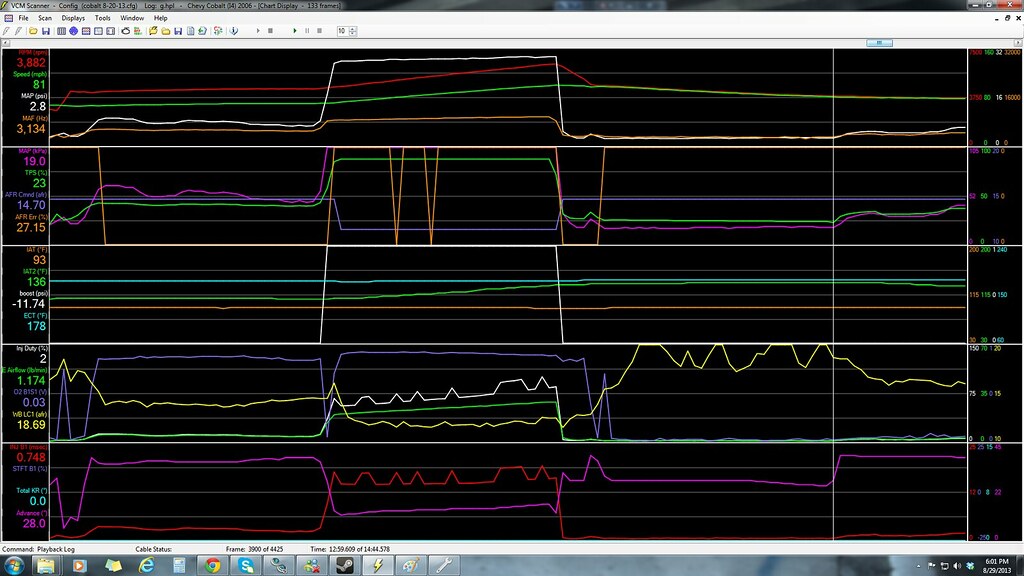test 3.hpt9-6-13 drive.hplcobalt2.cfgthanks, i just went back and looked at that tune after spending a few days reading the forums and getting familiar with the software...and i'm not sure what i was originally trying to accomplish. I tuned the maf with fuel trims disabled ,and all the adders disabled. i pretty much gave up on trying to tune the VE table on the street lol.
i'm currently running MAF only and have all the trims and adders remediable. It still has a slight issue being leaner in 1st and 2nd than in 3rd so i just kinda split the difference,i'm thinking the issue may be to the injectors being pretty much static past 5krpm. iv attached the most recent files if anyone wants to check them over.





 Reply With Quote
Reply With Quote
